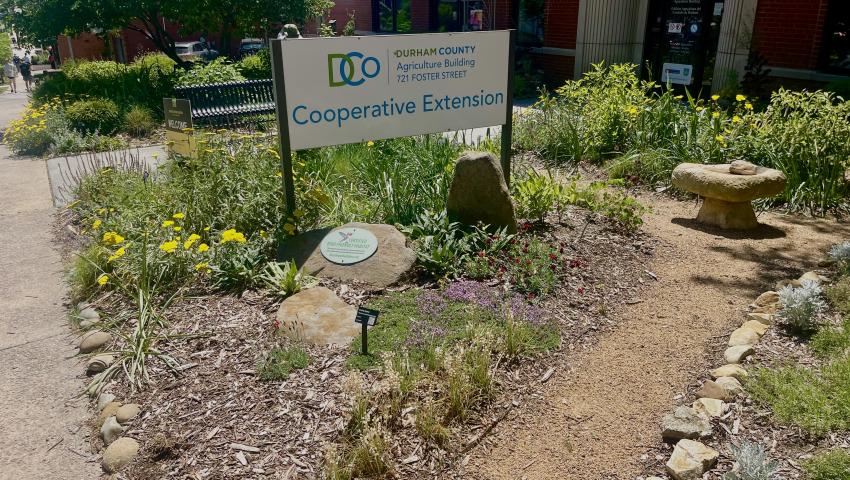
Takeaways from the NUEL Regional Conference Lessons from the 2025 National Urban Extension Leaders Conference
At the beginning of May, I attended the 2025 National Urban Extension Leaders Regional Conference in Durham, North Carolina. For those who are unfamiliar, NUEL's goal is to advocate for and advance Extension's work in urban settings and foster collaborations at the local, regional, and national levels to serve urban communities. The conference’s theme this year is “The power of WE: partnering for impact,” and my three-day conference was full of insightful speakers from the Southern and 1890s universities, conversations that led to deeper thinking and a more partnership-focused mindset, and TONS of examples of local partnerships in action. During the conference, I ate delicious food (Durham is a foodie city!), explored some of the agriculturally driven historical components of the city (Lucky Strike, anyone?), and deepened my connection with my Extension work (we love a post-conference euphoria). Collaboration lies at the heart of all extension work – urban and rural. At NUEL, I heard repeatedly about the impact of mutually beneficial partnerships, fostering connections, and relationship building. Here are three takeaways from the NUEL Conference, specifically for folks like me (aka Extension-based Technical Assistance Providers).
Great Extension Agent vs. Great Extension Recognition
I can’t count the number of times that I have explained to someone what Cooperative Extension is. Many community members are still unfamiliar with Extension, even as counties have AMAZING Cooperative Extension Agents and programs. Here’s the deal: You can be a great extension agent, but not receive great extension recognition, meaning you can get great feedback from those who utilize your programs, but you still may not be recognized by parts of your community, local government, or those who are making the big decisions. The question is: How do we bridge that gap? How does Extension communicate impact and integrate itself into the community and local government, to partner and collaborate on community issues, needs, and developments?
Ways to bridge this gap (learned through Stewart Vermaack, Loudoun County, VA CES) are:
- Showing up, even if it is just to silently sit in a four-hour meeting.
- Taking any opportunity to represent Extension and the work you do.
- Constantly educating people (community members and local govt.) on who you are, what you do, and who you serve.
- Work to build relationships. This can lead to a seat at the table in the future.
- Get to a point where your programming becomes known and talked about behind your back (good vibes, only).
- ^ these (above) steps lead to an increased likelihood of support, passive awareness, and active awareness with decision makers. Increasing your Extension recognition allows you to partner and collaborate with others on community issues, needs, and developments.
Let’s stop being the best-kept secret!!!
Does anyone know why we are the best-kept secret? How do we escape the saying (Extension is the best-kept secret) that every single Extension professional can recite by heart?? Cooperative Extension is more than cows and tobacco. It’s programs for urban agriculture, youth development, financial literacy, healthy living, farmland transition, and SO much more. How can we have great programming, but not be visible to the outside world? Everyone needs extension programming, but how do we define and market that? Here are a few pointers collected from the conference:
- Ensure program relevancy and public value.
- Build multi-level partnerships that involve community buy-in and relationship building. Be purposeful about what you are trying to gain from partnerships and what each partner’s responsibilities are.
- Look for ways to increase community impact, which will = increased awareness.
- Build volunteer bases that reflect the people in your community and the communities that we serve. Think about what (if) you need to change to reflect your community.
- Share your work with those who have similar goals.
- Be intentional and patient – it can take years to build meaningful relationships.
- Remember that some communities may not know what our work is or may have had a bad experience in the past. Be patient and use this as an opportunity to change their thinking, knowledge, and perspective.
Advice for county agents when working with county commissioners?
This question was asked during the Urban Partnership Panel session of the conference. While I do not work with a County Commissioner, I thought these ideas could still be applied generally. Responses from the panel included:
-
The Strategic Plan is your North Star. Take the value you can bring and relate it back to the Strategic Plan.
-
Outcomes are more important than outputs. The impact on the people who participated is more important than the number of people who showed up. Think about impactful programming and how to evaluate that.
-
Don’t forget the human element of what we do. Take time to meet with your county’s decision makers and stay engaged year-round. They don’t just want to see us at budget time.
-
Make yourself VISIBLE.
-
Quick reports and updates on the work you are doing go a long way.
-
Help other department leaders understand what Extension can offer them. For example, how can your county extension programming benefit Parks & Rec?
-
Connection happens locally, build it there.
Through reading these takeaways, hopefully, you have gained something to bring back to your work. This conference was insightful and provided a great space to connect with other Extension leaders and partners. If you have made it this far, thanks for reading!